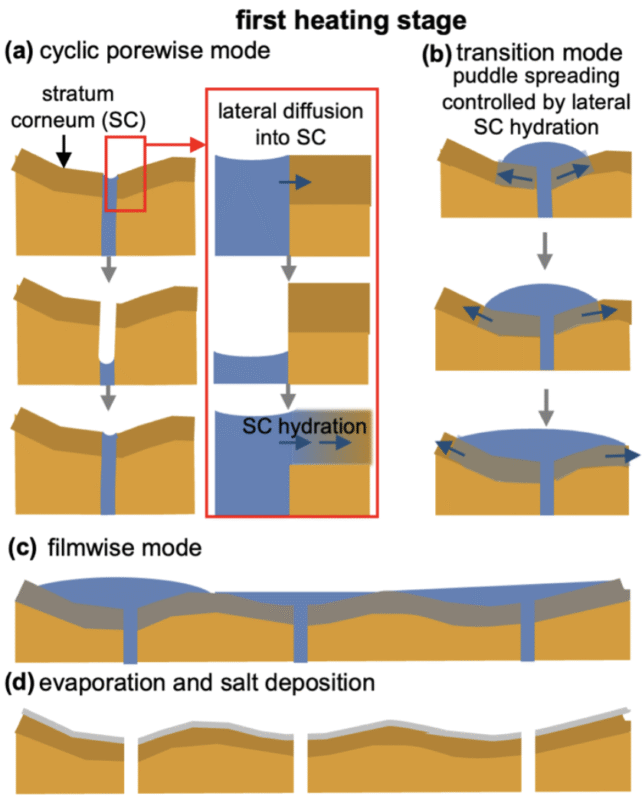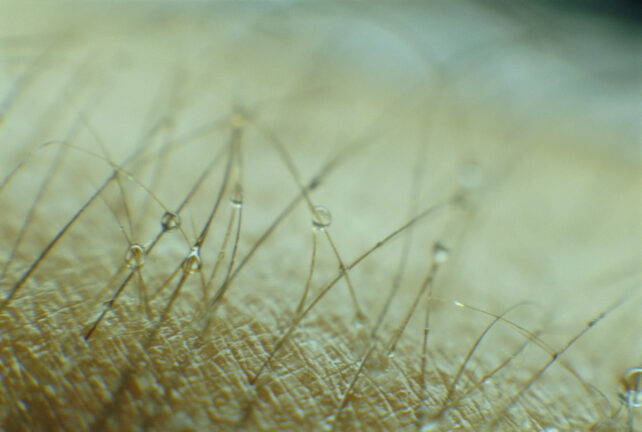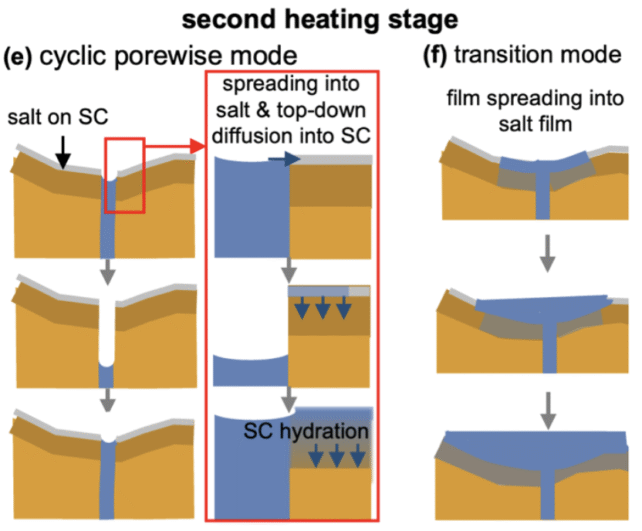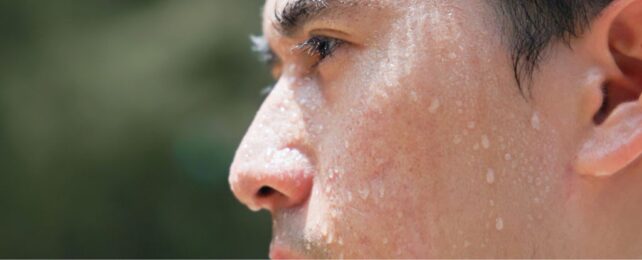A "bead of sweat" is a beautiful turn of phrase, but the imagery is not quite right. Scientifically speaking, it may be more accurate to say a "film of sweat".
A new study has found that human perspiration emerges from pores not as discrete droplets, as is often imagined, but as nearly flat, shallow puddles.
If enough sweat pores fill to the brim, the overflow combines to form a very thin film on the surface of the skin, less than 0.1 millimeters thick.
Related: Night Sweats: Why You Have Them, And What You Can Do About It
The findings suggest there is more to sweat than meets the naked eye.
From our vantage point, sweat on the forehead might appear like running droplets on a windowpane, but that's only the case if you don't sweat the small stuff, so to speak.
Using a special form of infrared thermography that can detect single sweat pores, researchers at Arizona State University zoomed in on the details like never before.
"Sweating has mostly been investigated using macroscopic physiological methods, leaving micro-to-macroscale sweating dynamics unexplored," writes the team, led by mechanical engineer Cibin Jose.

In experiments, six healthy participants lay down in a horizontal recliner, wrapped in an electric blanket that could warm them up.
As temperatures around the volunteers changed, sweat emerged and evaporated on their foreheads in a repeating cycle.
When the blanket warmed their bodies, their pores gradually filled with sweat until they overflowed, pooling across the skin to meet up with sweat from other overflowing pores.
Sometimes, little microscopic hairs on their foreheads pick up sweat droplets, too, leading to faster evaporation.
If sweat droplets sometimes rolled down the forehead, it was likely due to gravity. These "trails" of sweat were not actually how perspiration seemed to form straight out of the pore.

Once participants had gone through one sweat and cool cycle, they were left with a layer of salts on their skin.
When another cycle of warmth started, this salt allowed a film of sweat to form more rapidly across their skin the second time.

"When sweat reaches the edge of the pores during the second heating stage, it comes in contact with, wicks into, and spreads over the surrounding salt deposits, rapidly expanding a thin sweat film over the skin," explain the study authors.
The team hopes that in the future, their approach will help us study how sweat formation differs across body parts, physical activities, and age groups.
"This comprehensive study substantially advances our understanding of microscale human sweating fundamentals, which can propagate into enhancing applications across clinical diagnostics, textile engineering, and wearable sensor development," they conclude.
The study was published in the Journal of The Royal Society Interface.
